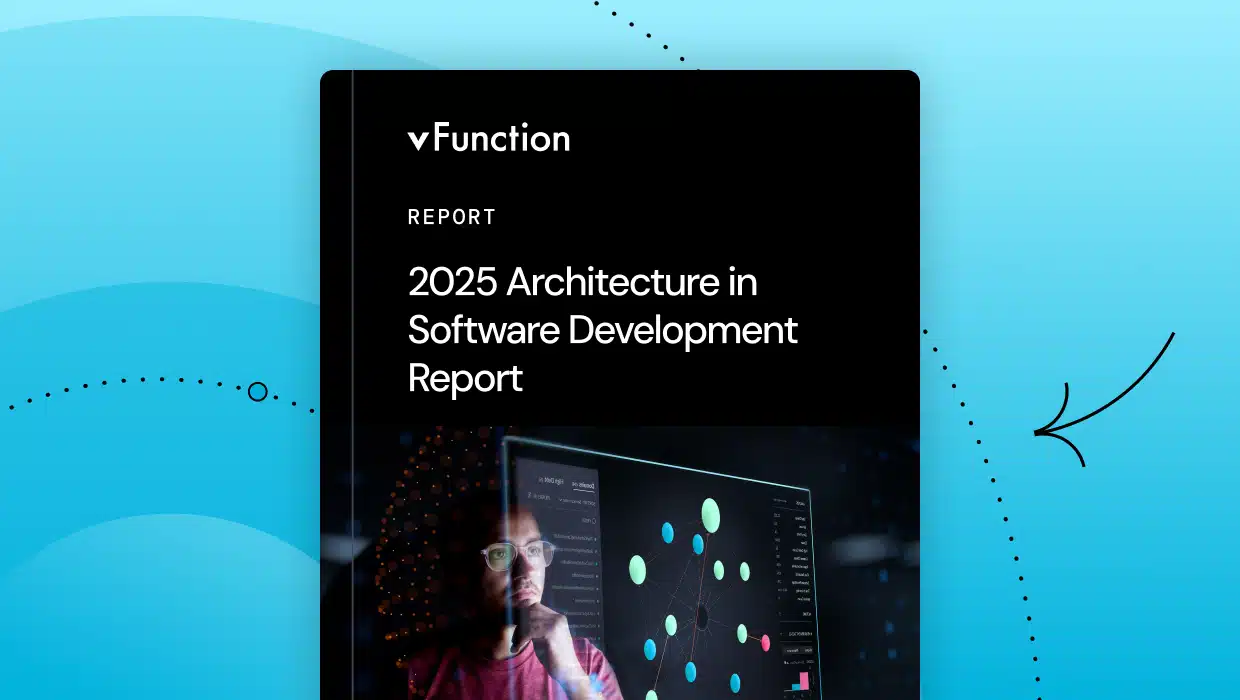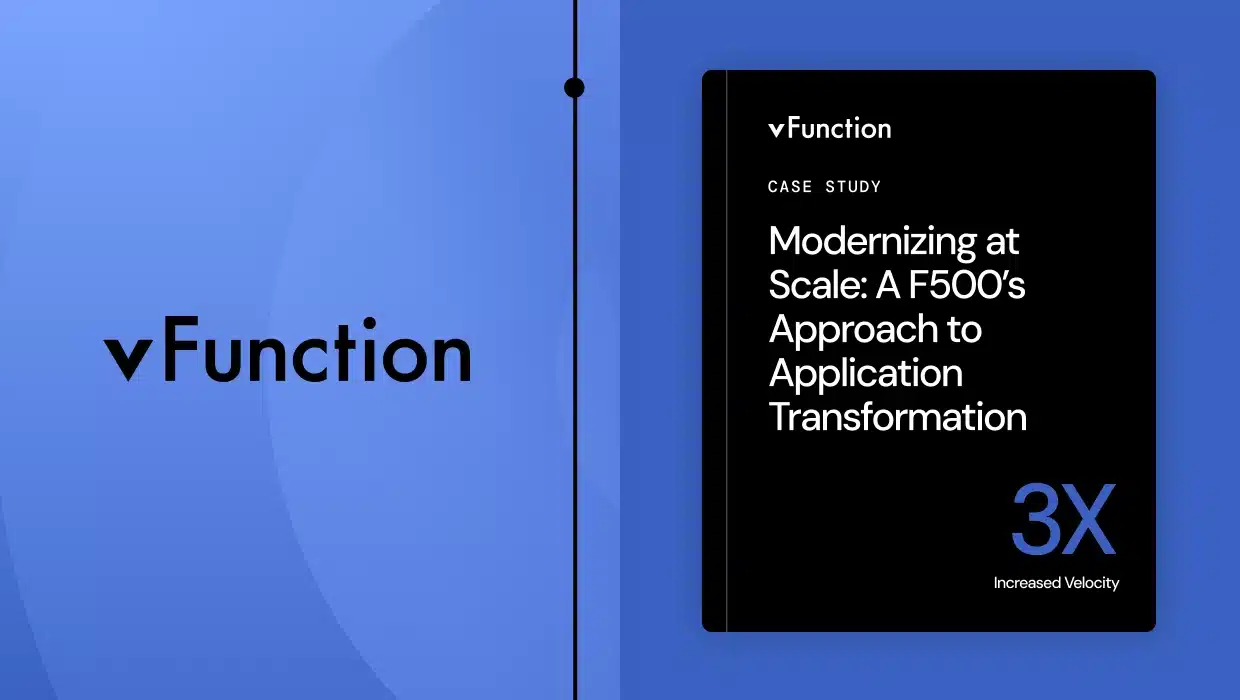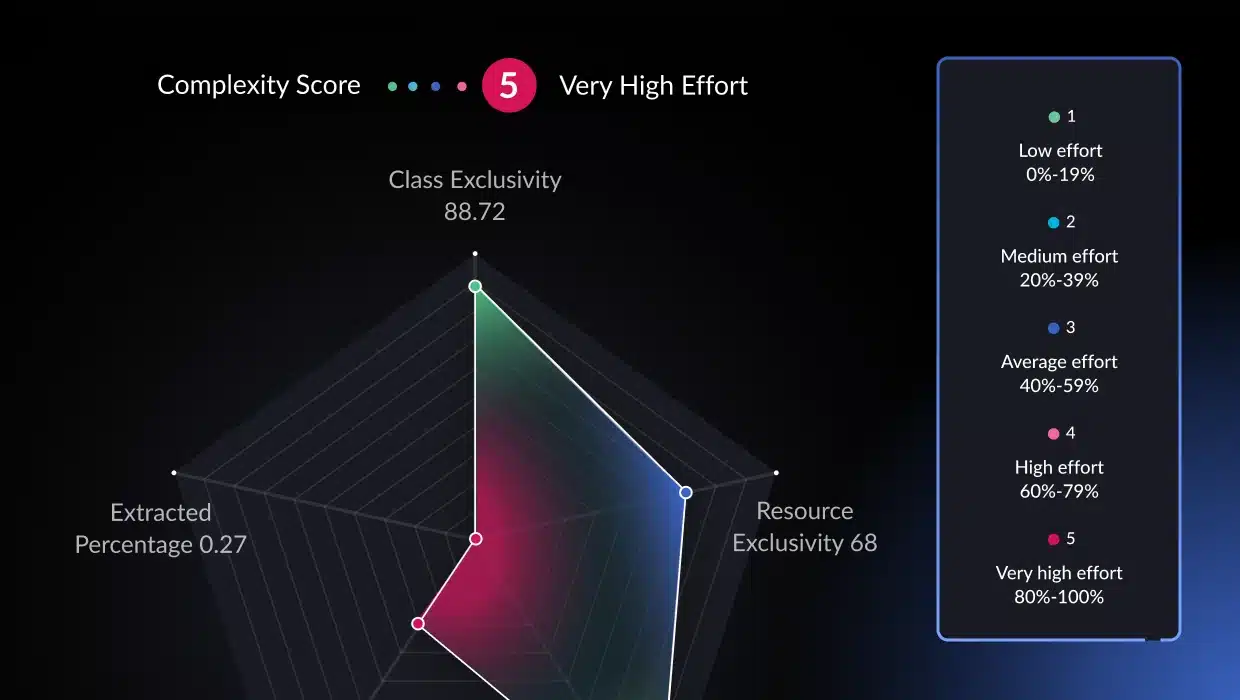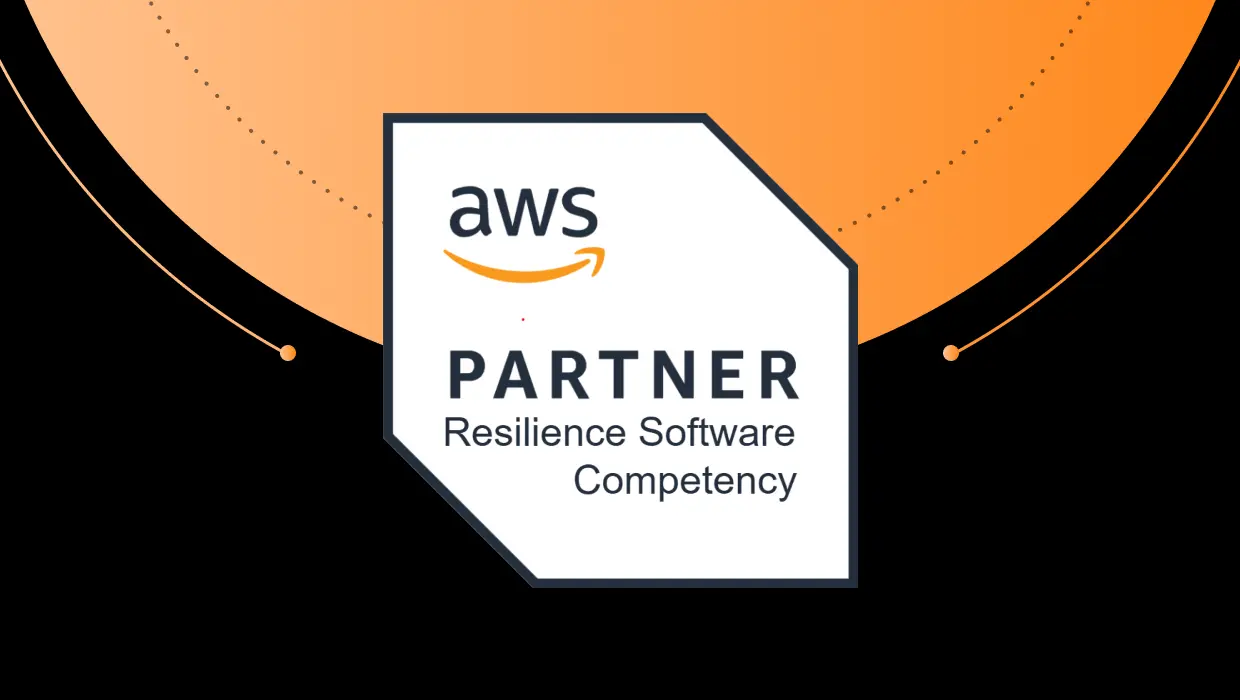With how quickly technology continues to move, it’s no surprise that most organizations struggle with the challenges associated with outdated legacy systems. These systems can directly hinder a company’s ability to adapt, innovate, and remain competitive, thwarting growth, disrupting operational efficiency, and stifling innovation.
Legacy modernization presents a strategic solution, offering a path to transform these existing systems into valuable assets that propel businesses forward. It’s not just about swapping old for new; it’s a strategic process that requires careful planning, deep technical expertise, and a keen understanding of business goals.
We will explore the various modernization strategies, cover best practices, and examine the many benefits you can achieve through this transformative process. We will also address the challenges and considerations involved, offering practical insights and solutions. Real-world case studies will showcase successful legacy modernization initiatives, demonstrating how organizations have overcome obstacles to achieve remarkable results.
Whether you’re considering a modernization initiative or already have one underway, this guide provides a practical roadmap to a more efficient, secure, and scalable path to legacy modernization. Let’s begin by looking more closely at what legacy modernization is.
What is legacy modernization?
Legacy modernization is a strategic initiative undertaken by organizations to revitalize their legacy software applications and systems. This process is essential to align these technologies with current industry standards and evolving business needs. While these existing systems often remain functional, their outdated architecture, reliance on obsolete technologies, and difficulties integrating with modern solutions can hinder operational efficiency and innovation.
Modernization does not necessarily mean a complete replacement of legacy systems. Instead, it involves a range of strategies to improve these systems’ performance, scalability, security, and maintainability while leveraging existing investments. There are several strategies that organizations can leverage to achieve their modernization goals, each with varying degrees of complexity and invasiveness. These strategies range from less invasive approaches like code refactoring and rehosting to more complete transformations like rearchitecting and rebuilding. Organizations can also opt for a hybrid approach, combining multiple strategies to address specific needs and constraints.
Multiple factors influence the selection of the most appropriate modernization strategy. These include the age and complexity of the legacy system, the organization’s budgetary and timeline constraints, risk tolerance, and the desired level of transformation. A thorough assessment of these factors is crucial to ensure the chosen strategy aligns with the organization’s goals and objectives.
A well-executed software modernization initiative can have significant benefits for organizations. This includes reduced operational costs, improved agility and responsiveness to market changes, enhanced security against cyber threats, and increased customer satisfaction through modernized user interfaces and improved service delivery. Next, let’s look at the types of legacy systems and how modernization efforts can be customized and tailored for each.
Types of legacy systems
Legacy systems encompass a range of technologies, each with distinct characteristics that necessitate tailored modernization approaches. Some common categories include:
Mainframe systems
Financial institutions, government agencies, and organizations with high processing demands frequently use these large-scale, centralized systems. Their modernization often involves strategies like rehosting or refactoring to leverage modern infrastructure while preserving critical functionalities.
Client-server applications
This architecture distributes processing between client devices (e.g., desktops, laptops) and servers. Modernizing client-server applications may involve migrating to web-based or cloud-native architectures for improved accessibility and scalability.
Monolithic applications
Monolithic applications, characterized by a tightly coupled architecture, can be challenging to modify and scale. Modernization often involves decomposing them into smaller, independent modules for increased agility and maintainability. These modules could either become microservices or make up a modular monolith.
Custom-built applications
Due to their bespoke nature, these applications, developed in-house to address specific business requirements, can present unique modernization challenges. Teams may rearchitect or replace components to align them with modern standards.
Understanding the type of legacy system you’re dealing with is crucial for determining the appropriate modernization strategy. This knowledge allows organizations to select the most appropriate tools, techniques, and approaches to achieve their modernization goals while minimizing disruption and risk.
Business processes and legacy systems
Legacy systems often create what we call “process debt” that builds up over time. This happens when business logic becomes tightly coupled with workflows, making modernization far more complex than just updating code.
When business rules get hardcoded into process flows, organizations face a common problem: critical business state becomes scattered across multiple systems with no single source of truth. This creates confusion around transaction boundaries, where business transactions span multiple legacy systems without proper coordination. The result? It becomes nearly impossible to maintain data consistency or trace how data transforms across different process boundaries.
Manual integration points between these legacy systems pose another challenge. Each manual handoff creates undocumented dependencies through implicit data formats and business rules. These processes introduce variability that cascades through downstream systems, ultimately creating scalability limits that can’t grow with your business demands.
Before modernizing any code, successful organizations start by mapping their process landscape. This means identifying which systems are authoritative for specific business capabilities, documenting how systems integrate with each other, and understanding what happens when each system fails. You simply can’t effectively break down a monolith without first understanding the business process boundaries it serves.
Modernization strategies
Before selecting a modernization strategy, it is crucial to evaluate the software system’s components:
- Hardware infrastructure: Bare-metal servers, on-premise virtualization, cloud, or hybrid setups.
- Runtime environment: Web servers, application servers and database servers.
- Development frameworks: Web frameworks, business logic frameworks, database frameworks, messaging frameworks, etc.
- Business logic: Implemented in programming languages like Java, .NET, etc.
The choice of modernization strategy depends on the type of legacy system, desired outcomes, budget, and risk tolerance. Often, a combination of these components will need updating, with no one-size-fits-all approach. Here are some common approaches:
Encapsulation
This involves creating interfaces or APIs around the legacy system, allowing it to interact with modern applications without significant changes to legacy code and underlying infrastructure. This relatively low-risk approach can provide quick wins in terms of integration.
Rehosting
Also known as “lift and shift,” this strategy involves migrating the legacy application to a newer platform, such as the cloud, mainly keeping legacy code in place. Rehosting can offer immediate benefits like improved infrastructure and scalability.
Replatforming
Like rehosting, re-platforming involves migrating to a new platform but with some code adjustments to leverage the new platform’s capabilities. This can be a good option for systems that are not overly complex.
Refactoring
Refactoring involves restructuring the existing codebase without changing its external behavior. Optimizing existing code and infrastructure improves maintainability, testability, and often performance. It’s a more invasive approach than encapsulation but less risky than a total rewrite.
Rearchitecting
Rearchitecting involves a more radical approach, including redesigning the system’s architecture to leverage modern technologies and design patterns. This can lead to significant improvements in performance, scalability, and agility.
Rebuilding/Replacing
The most expensive and time-consuming option is completely rebuilding or replacing the legacy system with a new solution, but it offers the greatest flexibility and potential for innovation.
Hybrid approach
Organizations often adopt a hybrid approach, combining different strategies to address specific aspects of their legacy systems. This may involve encapsulating some components, rehosting others, and refactoring or rearchitecting critical modules.
Choosing the right strategy requires careful analysis and a deep understanding of the legacy system and the organization’s goals. It is crucial to involve key stakeholders and technical experts in this decision-making process.
Cloud and hybrid infrastructure
The shift to cloud and hybrid infrastructure offers more than just modern hosting—it provides architectural capabilities that enable specific modernization patterns you can’t achieve with traditional infrastructure.
These platforms deliver three key modernization capabilities. First, they enable incremental data synchronization through patterns like event sourcing and change data capture, allowing you to maintain legacy systems while building modern consumers. Second, service mesh integration lets you gradually migrate traffic between old and new systems while maintaining unified observability. Third, they support stateful workload migration through storage abstraction and session state externalization.
The key to successful implementation starts with observability. Deploy monitoring and logging across your hybrid environment before migrating any workloads. This gives you visibility into actual usage patterns, which often differ significantly from what you might assume. From there, you can implement the strangler fig pattern using API gateways as integration points, gradually replacing legacy functionality while maintaining existing interfaces.
Benefits of legacy modernization
Investing in legacy modernization can yield many benefits that touch nearly every aspect of an organization’s operations. Here are some of the key advantages:
Improved efficiency and productivity
Modernized systems streamline processes, automate manual tasks, and eliminate bottlenecks. This results in faster response times, reduced errors, and increased operational efficiency. Due to the modular nature of modernized systems, employees can focus on higher-value activities, improving productivity and job satisfaction.
Also, onboarding new employees becomes quicker. The enhanced efficiency also translates to improved resource utilization and cost savings, as fewer resources are required to achieve the same or better results.
Enhanced agility and innovation
Legacy systems are often rigid and slow to adapt to changing business needs. Modernized systems are more modular, flexible, scalable, and easily integrated with new technologies. This enables businesses to respond quickly to market trends, innovate faster, and stay ahead of the competition.
Reduced costs
Maintaining legacy systems can be a financial burden due to hardware obsolescence, expensive software licenses, and the need for specialized skills. Modernized systems often leverage cloud infrastructure, open-source software, and standardized technologies, which can significantly reduce long-term costs.
Increased security
Legacy systems are more vulnerable to security threats due to outdated software, unpatched vulnerabilities, and lack of support. Modernized systems incorporate the latest security measures, protocols, and best practices, ensuring better protection against cyberattacks, data breaches, and compliance violations. By mitigating security risks, organizations can safeguard their sensitive data, maintain customer trust, and avoid costly legal and regulatory penalties.
Improved customer experience
Modernized systems can deliver a seamless, personalized, and omnichannel customer experience. By integrating various touchpoints and leveraging data-driven insights from loosely-coupled modules, businesses can tailor their interactions to individual customer preferences and needs. This personalized approach increases customer satisfaction, loyalty, and, ultimately, higher revenue. Modernized systems also enable faster and more efficient service delivery, enhancing the overall customer experience.
Improved employee experience
Modernizing applications makes employees’ lives, mainly those of developers and architects, much easier. The developers and architects working on modernized applications will have an easier time working with them and will have more confidence in their ability to scale and adapt to future changes. Instead of a chosen few who know the old application’s architecture and codebase, modernizing the code and architecture makes the application more accessible to all developers. This can have a significant impact on the experience of developers and architects working on the applications.
As a secondary benefit, working in a more modern stack can also help to attract new employees to join your team since architects and developers tend to gravitate towards modern tech when it comes to taking on a new role.
Better data insights
Legacy systems often store data in silos, making it difficult to extract meaningful insights. Modernized systems facilitate data integration and analytics, enabling businesses to make data-driven decisions, drive innovation, and gain a competitive edge.
Future-proofing
Modernization ensures an organization’s IT infrastructure aligns with current and future technological advancements. This avoids becoming obsolete and provides a foundation for continuous innovation. Future-proofing provides a solid foundation for innovation and allows organizations to stay ahead of the curve.
The benefits of legacy system modernization extend beyond the IT department, impacting the entire organization. It’s a strategic investment that can drive business growth, improve competitiveness, and position the organization for long-term success. However, legacy modernization initiatives have challenges and complexities that organizations must carefully consider and address.
Challenges and considerations in legacy modernization
While legacy modernization offers significant advantages for businesses, it is essential to consider potential obstacles such as integration challenges, data migration complexities, and the need for effective change management to ensure a successful transition.
Complexity and risk
Legacy systems are often complex, poorly documented, and intertwined with critical business processes. Modernizing them requires careful planning and risk management. Visualizing the system’s key functional domains, their intricacies, interdependencies, and potential failure points is crucial for minimizing disruptions and ensuring a smooth transition.
Cost and time
Digital transformation projects can be expensive and time-consuming. The costs can vary widely depending on the size and complexity of the system, the chosen strategy, and the resources involved. Establishing realistic expectations and allocating sufficient budget and time are essential for a successful outcome.
Resistance to change
Employees accustomed to the legacy system may resist change due to fear of the unknown, learning curves, or potential workflow disruptions. Effective change management strategies, including communication, training, and stakeholder engagement, are vital for overcoming resistance and ensuring user adoption.
Data migration and integration
Migrating data from legacy systems can be a complex process. Ensuring data accuracy, durability, consistency, and security during the transition is critical. Integrating the modernized system with other existing applications and data sources can pose challenges. Thorough planning, data validation, and testing are necessary to mitigate these risks.
Skills and expertise
Modernization often requires specialized skills and expertise that may not be readily available within the organization. Partnering with experienced vendors or consultants can help bridge the skills gap and ensure the project’s success.
Legacy system interdependencies
Legacy systems are often tightly integrated with other applications and processes. Disentangling these dependencies and ensuring seamless integration with the modernized system can be a major challenge. A well-defined integration strategy and thorough testing are essential for mitigating these risks.
Regulatory and compliance requirements
Certain industries, such as finance, energy and healthcare, have strict regulatory requirements for data management, security, and privacy. Modernization projects must comply with these regulations to avoid legal and financial repercussions.
By proactively addressing these challenges and considerations, organizations can increase the likelihood of a successful legacy modernization initiative. Thorough planning, risk mitigation strategies, and effective communication are key to navigating this complex landscape and realizing modernization’s full potential.
The application modernization journey
to be successful with modernization, this requires what architectural observability. This allows architects and developers to systematically understand existing systems before making decisions about future architecture. This can be done manually, which takes an extended amount of time and large amounts of expertise, or automtically through platforms like vFunction.
The process starts with dependency discovery and technical debt assessment. While static code analysis shows you architectural debt, runtime analysis reveals how your systems actually behave in production. You need to identify dead code, understand which parts of your system handle the majority of traffic, and map all external dependencies along with their potential failure modes. Automated analysis tools, like vFunction, can accelerate this discovery process by analyzing your codebase to reveal hidden dependencies and structural patterns that would take months to document manually. vFunction’s architectural observability platform provides comprehensive dependency mapping and technical debt identification across both monolithic and distributed applications.
Next comes risk-based prioritization. Plot your components against business criticality and technical risk. Components that score high in both areas should be encapsulated first, not rewritten—the risk of introducing new problems often outweighs the benefits of clean code.
For domain boundary discovery, don’t guess at microservice boundaries. Instead, analyze database transactions to find true consistency boundaries, examine team communication patterns (Conway’s Law often reveals good service boundaries), and look at which components change together. Components that change together should generally stay together. Modern architectural analysis platforms can help identify these natural boundaries by examining actual code relationships and data flow patterns within your monolith, providing data-driven recommendations for optimal separation points. Tools like vFunction can automatically analyze class exclusivity and service relationships to suggest the most logical microservice boundaries based on actual code structure rather than assumptions.
Finally, establish continuous modernization through ongoing architectural observability that can validate your decisions over time. This includes monitoring for dependency and architectural drift, performance regression, and security boundary violations.
Case studies and best practices
Modernizing legacy applications is crucial for companies aiming to stay competitive and control their application scalability and costs. Modernization allows for greater scalability, faster deployment cycles, and improved developer morale. While the transition can be complex, the benefits are substantial. Let’s look at two examples below of the benefits of investing in legacy modernization, particularly in shifting from a monolith to a microservices architecture.
Trend Micro: Cybersecurity leader embraces agility
Trend Micro, a global leader in cybersecurity, successfully refactored its monolithic Workload Security product suite using vFunction’s AI-driven platform. This modernization led to a 90% decrease in deployment time for critical services and a 4X faster modernization process than manual efforts. The company also reported a significant boost in developer morale due to the improved codebase and streamlined processes.
Intesa Sanpaolo: Banking on modernization
Intesa Sanpaolo, a leading Italian banking group, also began a modernization journey, using vFunction as a critical factor in their strategy. By refactoring its monolithic Online Banking application into microservices, the bank achieved a 3X increase in release frequency and a 25% reduction in regression testing time. This resulted in substantial cost savings, improved application management, and increased customer satisfaction due to enhanced stability and reduced downtime.
These case studies help to highlight the transformative power of legacy modernization. By transitioning applications into a more modern light, such as moving from monolithic architectures to microservices, companies can unlock significant efficiency, cost savings, and customer satisfaction benefits.
Best practices for legacy modernization
These case studies illustrate some essential best practices for legacy modernization:
- Start with a clear vision and strategy: Define the modernization project’s goals, objectives, and success metrics.
- Conduct a thorough assessment: Assess the current state of your legacy systems, identify pain points, and prioritize areas for modernization.
- Adopt a phased approach: Break down the modernization project into smaller, manageable phases to reduce risk and ensure continuous progress.
- Address business logic early: For a typical 3-tier application, it is strategic to start with modularizing the business logic. Rewriting the user interface (UI) without addressing the business logic results in only an aesthetic upgrade, with no improvement in the user experience (UX). Conversely, initiating with database modernization is risky because database changes are complex to reverse and limit room for iteration. By modularizing the business logic first, the most significant value improvements can be achieved quickly. Once the business logic is modularized, you can then proceed to modernize the database and the user interface simultaneously, ensuring a comprehensive and effective upgrade.
- Involve key stakeholders: Ensure that all relevant stakeholders, including business users, technical teams, and executives, are involved in the planning and decision-making.
- Choose the right technology and partners: Select technologies and partners that align with your business goals and have proven expertise in legacy modernization.
- Focus on data quality and integration: During the migration process, ensure that data is accurate, consistent, and secure. Plan for seamless integration with other systems.
- Emphasize change management: Implement effective change management strategies to address resistance, communicate the benefits of modernization, and ensure user adoption.
- Monitor and measure: Continuously monitor the modernized system’s performance, measure its impact, and adjust strategies as needed.
By following these best practices and learning from successful case studies, organizations can increase their chances of a successful legacy modernization initiative and reap its many benefits.
How vFunction can help with legacy modernization
Understanding the current state of your existing system is critical in determining whether it needs modernization and the best path to move forward. This is where vFunction becomes a powerful tool to simplify and inform software developers and architects about their existing architecture and the possibilities for improving it.
Let’s break down how vFunction aids in this process:
Automated analysis and architectural observability
vFunction begins by deeply analyzing an application’s codebase, including its structure, dependencies, and underlying business logic. This automated analysis provides essential insights and creates a comprehensive understanding of the software architecture, which would otherwise require extensive manual effort to discover and document. Once the application’s baseline is established, vFunction kicks in with architectural observability, allowing architects to observe how the architecture changes and drifts from the target state or baseline. As application modernization projects get underway, with every new code change, such as adding a class or service, vFunction monitors and informs architects, allowing them to observe the overall impacts of the changes.
Identifying microservice boundaries
Suppose part of your modernization efforts involves breaking down a monolith into microservices or a modular monolith. In that case, vFunction’s analysis helps identify domains, a.k.a. logical boundaries, based on functionality and dependencies within the monolith. It suggests optimal points of separation to ensure ongoing application resilience and scale.
Extraction and modularization
vFunction helps extract identified components within an application and package them into self-contained microservices. This process ensures that each microservice encapsulates its own data and business logic, allowing for an assisted move towards a modular architecture. Architects can use vFunction to modularize a domain and leverage Code Copy to accelerate microservices creation by automating code extraction and framework upgrades. The result is a more manageable application that is moving toward your target-state architecture.
Key advantages of using vFunction
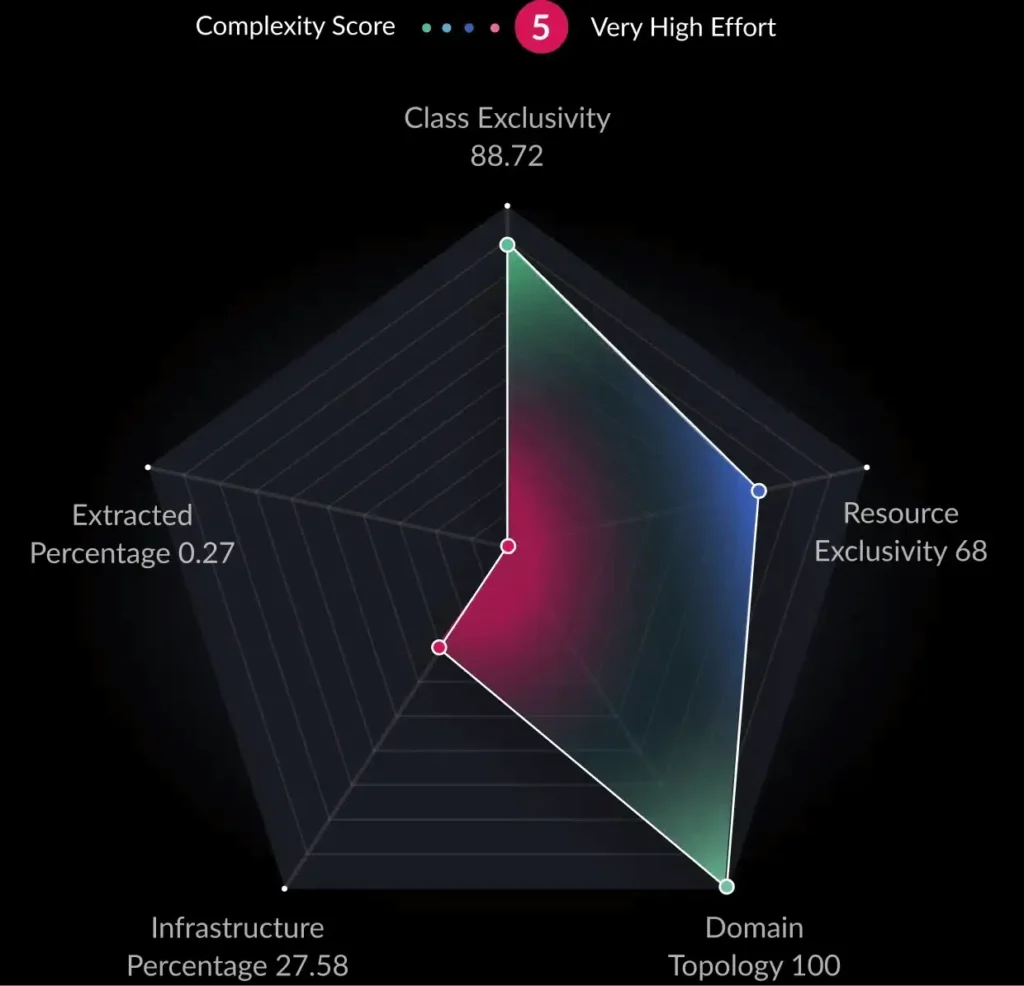
- Engineering velocity: vFunction dramatically speeds up the process of improving an application’s architecture and application modernization, such as moving monoliths to microservices, if that’s your desired goal. This increased engineering velocity translates into faster time-to-market for products and features and a modernized application.
- Increased scalability: By helping architects view and observe their existing architecture as the application grows, application scalability becomes much easier to manage. Scaling is more manageable by seeing the application’s landscape and helping improve each component’s modularity and efficiency.
- Improved application resiliency: vFunction’s comprehensive analysis and intelligent recommendations increase your application resiliency and architecture. By seeing how each component is built and interacts with each other, teams can make informed decisions favoring resilience and availability.
Conclusion
Legacy modernization is a strategic initiative for businesses to remain competitive. It involves updating or replacing outdated systems and processes to improve efficiency, reduce costs, and enhance security. Although legacy system modernization can be complex, the advantages are substantial and impact many areas of the business and technical assets. With careful planning and expertise, companies can transform legacy systems back into valuable assets that drive innovation, growth, and long-term success.
Legacy application modernization is a continuous process. As technology evolves, businesses must adapt to remain competitive. By adopting a mindset of continuous modernization using processes like architectural observability, organizations can ensure their systems remain relevant, agile, and capable of supporting their evolving business needs. As Trend Micro and Intesa Sanpaolo demonstrated, the strategic decision to modernize applications can yield substantial returns.
If your organization is grappling with the limitations of legacy systems, vFunction’s AI-driven platform gives teams deep insights and actionable suggestions to help expedite legacy modernization initiatives. Embrace the future of application development and modernization by unlocking new levels of agility, scalability, and innovation with vFunction’s architectural observability platform.

